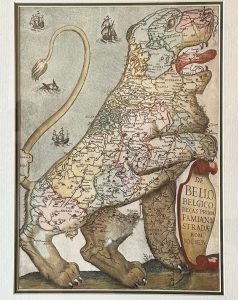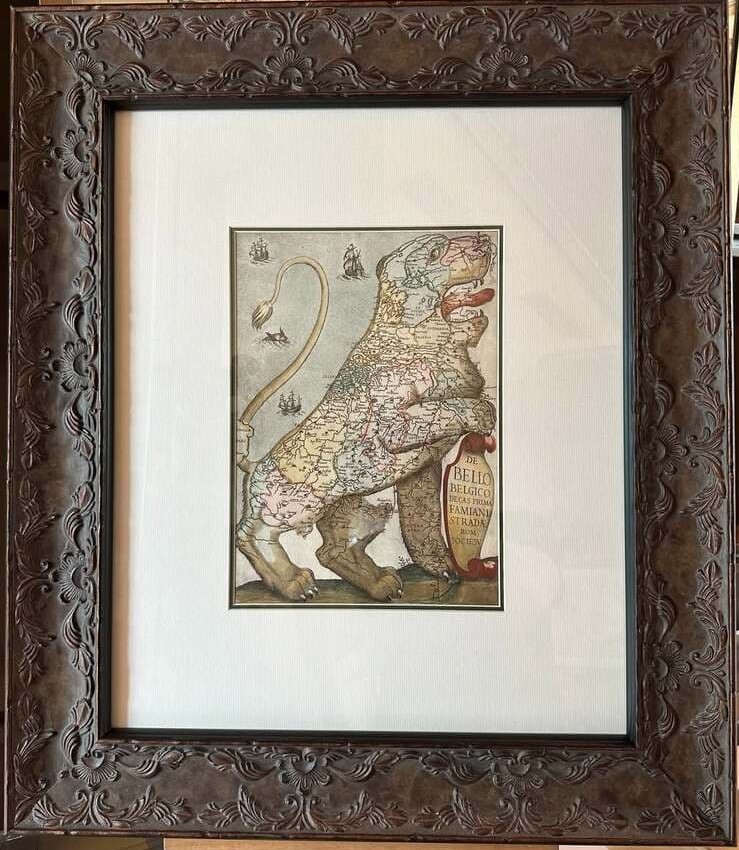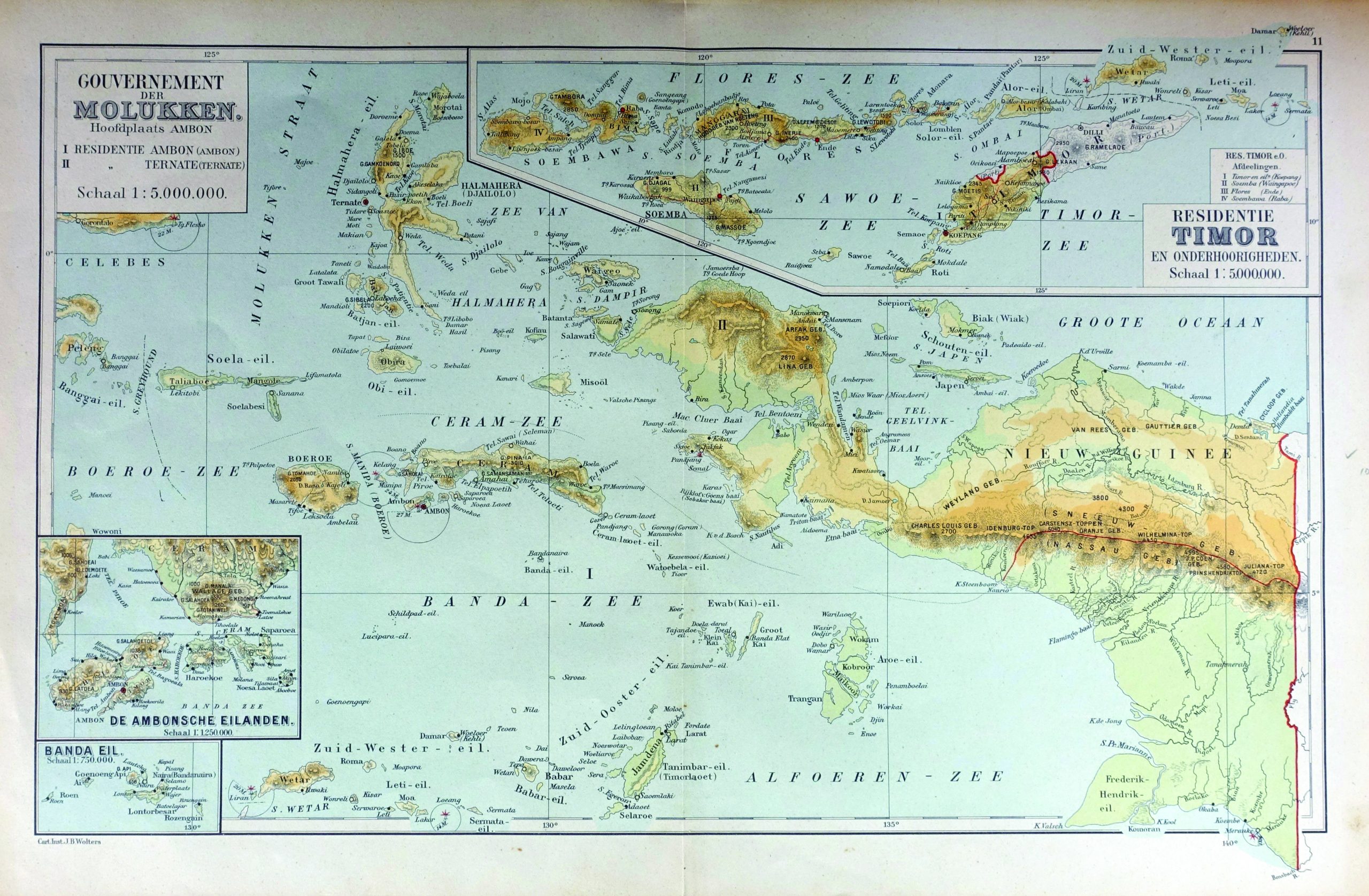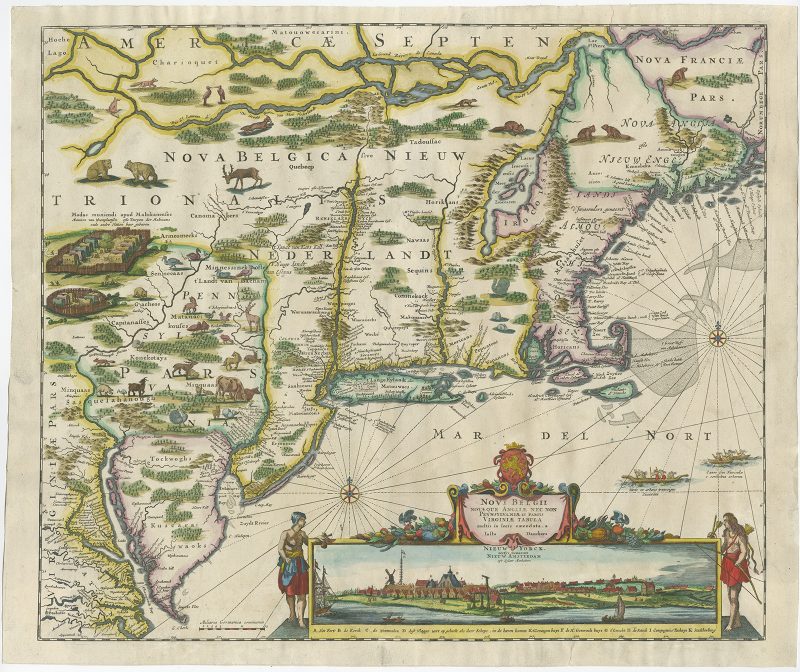De Bello Belgico (Leo Belgicus)
De Bello Belgico (Leo Belgicus) – The War of the Low Countries (Belgian Lion)
– Cartographer: Famiano Strada
– Engraver: Franciscus Corbelletti
– Publication: Published in 1632, Rome
– Dimensions: Approximately 24 x 35 cm
– Condition: Professionally framed, with vibrant details preserved.
This copper engraving, titled *De Bello Belgico*, depicts the famous *Leo Belgicus*, or “Lion of the Low Countries,” symbolizing the seventeen provinces of the Netherlands in the form of a proud lion. The work was created by Famiano Strada, an Italian Jesuit historian, and was engraved by Franciscus Corbelletti in 1632. The map was part of Strada’s book *De Bello Belgico*, which chronicled the Eighty Years’ War (1568–1648), a conflict that led to the independence of the Dutch Republic from Spanish rule.
Franciscus (or Francesco) Corbelletti was an engraver and publisher active in Rome during the early 17th century. His work often included maps, portraits, and frontispieces, showcasing his skill in creating detailed engravings that combined artistry with historical narrative. Corbelletti’s engravings were highly valued for their quality, and his work on the *Leo Belgicus* contributed to the map’s popularity in Europe.
The *Leo Belgicus* was not just a geographical map but a powerful symbol of resistance, strength, and unity, especially during the Dutch struggle for independence. This iconic map form, combining national pride with cartographic artistry, became extremely popular across Europe. Its popularity also stemmed from the unique and imaginative design, where the Low Countries are shaped into the form of a lion, adding a symbolic and patriotic layer to the map’s practical use.
This particular version is a rare example from the Roman edition by Corbelletti, notable for its precise engraving and historical significance. Its smaller size makes it an exquisite piece suitable for intimate viewing, allowing collectors and historians to appreciate the detailed work that embodies both cartographic skill and historical symbolism.





